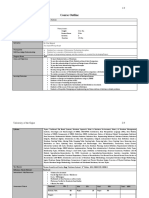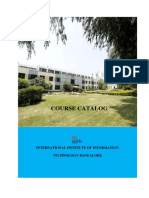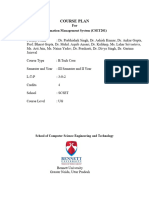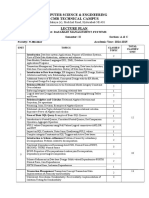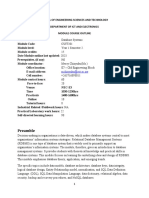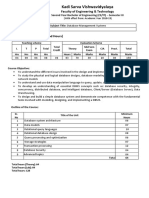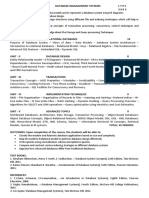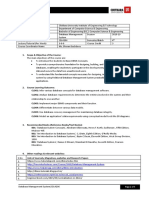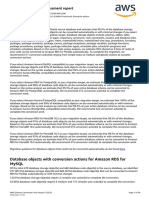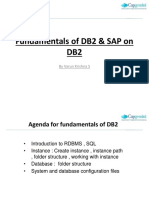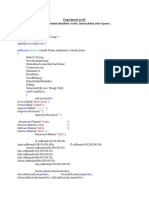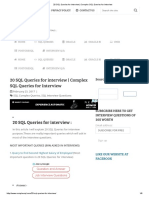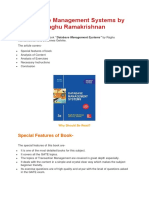0% found this document useful (0 votes)
125 views7 pagesDatabase Systems Course Outline
This document outlines a course on database systems. The 4 credit, 16 week course will be taught by Shakra Mehak and have prerequisites of data structures. Students will learn to design and implement relational databases, write SQL queries, and understand database modeling techniques. Assessment will include quizzes, assignments, a midterm, term project, and final exam. Recommended textbooks are also listed.
Uploaded by
Ahmad SaeedCopyright
© © All Rights Reserved
We take content rights seriously. If you suspect this is your content, claim it here.
Available Formats
Download as PDF, TXT or read online on Scribd
0% found this document useful (0 votes)
125 views7 pagesDatabase Systems Course Outline
This document outlines a course on database systems. The 4 credit, 16 week course will be taught by Shakra Mehak and have prerequisites of data structures. Students will learn to design and implement relational databases, write SQL queries, and understand database modeling techniques. Assessment will include quizzes, assignments, a midterm, term project, and final exam. Recommended textbooks are also listed.
Uploaded by
Ahmad SaeedCopyright
© © All Rights Reserved
We take content rights seriously. If you suspect this is your content, claim it here.
Available Formats
Download as PDF, TXT or read online on Scribd
/ 7





